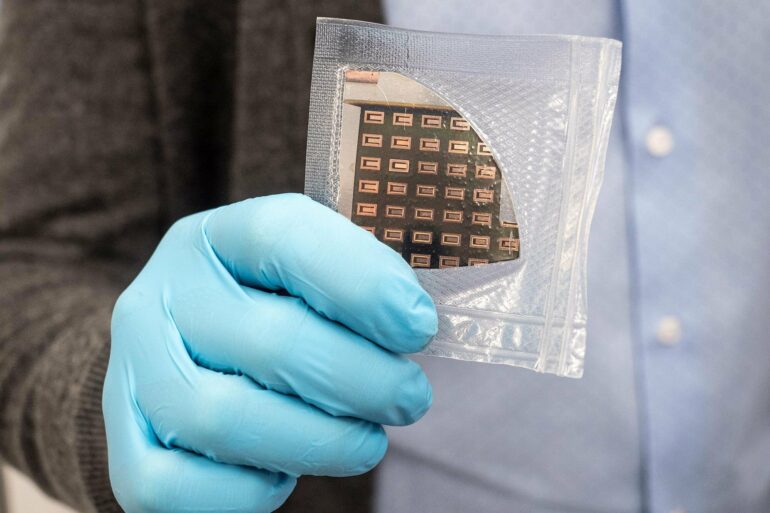As yet, no portable energy storage technology is capable of combining high energy and fast charging with extensive safety. However, a solution could soon see the light of day: at Empa, Yaroslav Romanyuk and his team have developed a prototype solid-state stacked battery that could potentially combine all three benefits.
The lithium-ion batteries used in today’s mobile phones or electric vehicles, for example, excel at storing large quantities of energy, but require tens of minutes to charge and discharge at best. This limits their use in high-power applications, such as electric-powered aerial vehicles during take-off and landing. Moreover, as the substance that conducts the ions in these batteries is liquid, its flammability raises safety issues.
Solid-state batteries use a non-flammable solid electrolyte. However, the only batteries of this type that are commercially available at present are thin-film solid-state batteries. Although powerful and safe, the energy storage capacity of these batteries is low. This restricts their use to low-energy applications—for example implanted medical devices such as pacemakers or small devices such as card readers.
Expertise from photovoltaics
For about 10 years, scientists at Empa have been working to develop a thin-film battery that combines energy, power and safety. And their efforts are starting to bear fruit, as an article recently published in the journal Communications Chemistry asserts.
“We drew on our photovoltaic laboratory’s expertise in thin-film technology by using a special process to deposit thin films of battery material on a substrate using physical vacuum deposition,” explains Moritz Futscher, first author of the study. By adopting this process, the scientists were able to increase their prototype’s energy storage capacity. “To do that, we had to find a way to increase the battery’s energy density—in other words to reduce the substrate’s share of the weight,” he says.
Their solution was to stack two thin-film cells on top of one another on the same substrate. “The hardest part was connecting the two cells. That’s where vacuum deposition was essential in creating a stable connection about 1/100th the thickness of a human hair and depositing the cells precisely on top of each other,” Futscher adds.
For aircraft, drones and satellites
And it works—the tests carried out by the scientists show that it is possible to charge the prototype in just one minute, while simulations show that this battery design has the potential to rival the energy storage capacity of current and future lithium-ion batteries.
Although the first laboratory prototype currently consists of just two cells, the scientists envisage being able to stack even more cells on the same substrate. “Our simulations show that the optimum is around 10 cells, after which substrate weight plays a marginal role,” says Futscher.
Given the very high initial cost of manufacturing these batteries, they will tend to be reserved for applications where energy, power and safety are essential, but where cost is not a major obstacle. They could, for example, be used in aircraft, drones or satellites.
More information:
Moritz H. Futscher et al, Monolithically-stacked thin-film solid-state batteries, Communications Chemistry (2023). DOI: 10.1038/s42004-023-00901-w
Provided by
Swiss National Science Foundation
Citation:
Stacking cells in thin layers could result in higher-performance solid-state batteries (2023, August 9)



